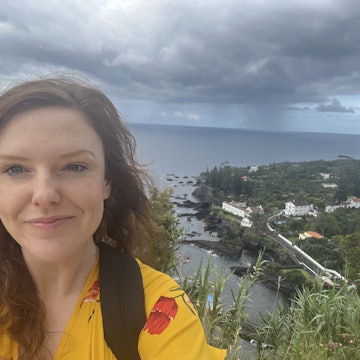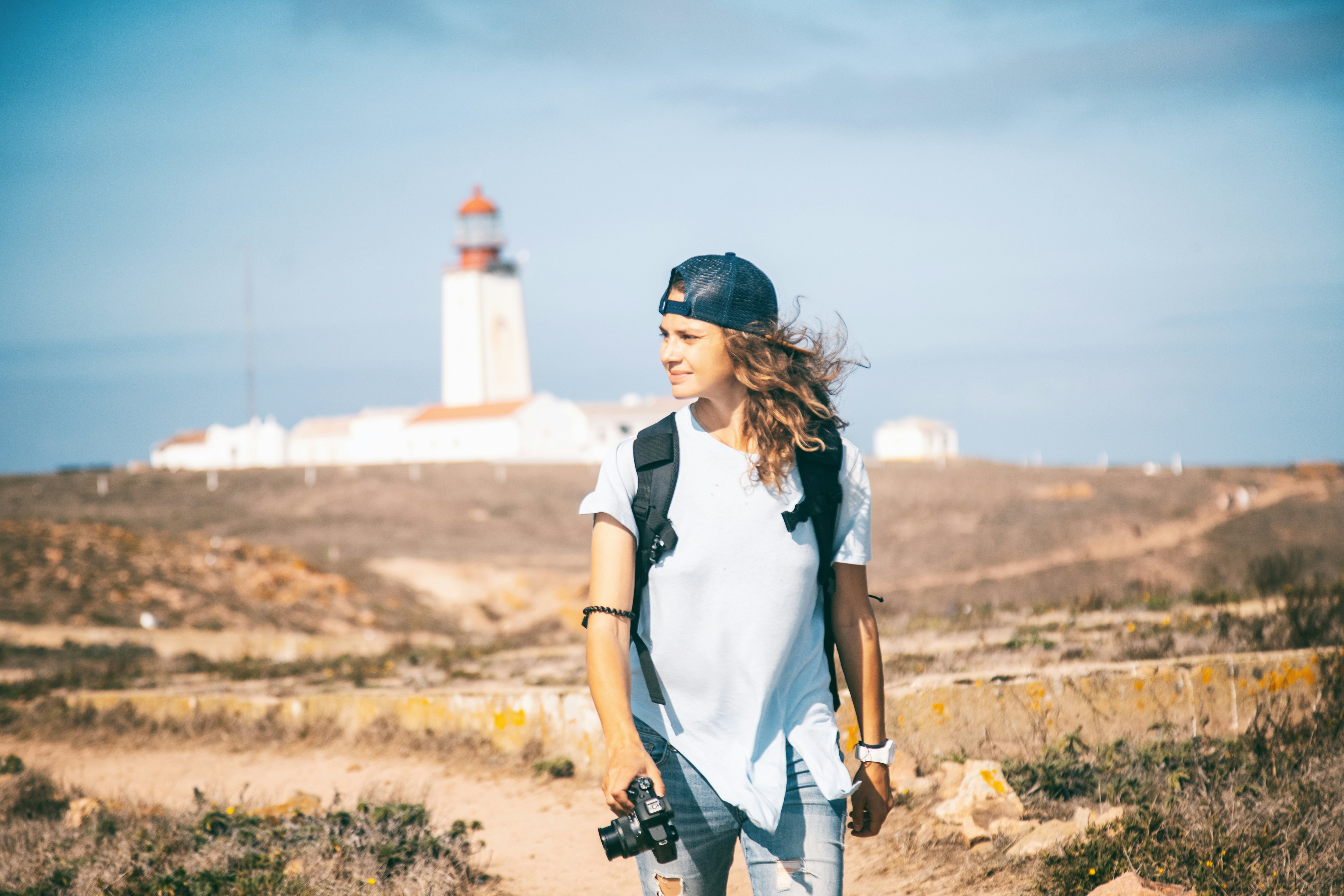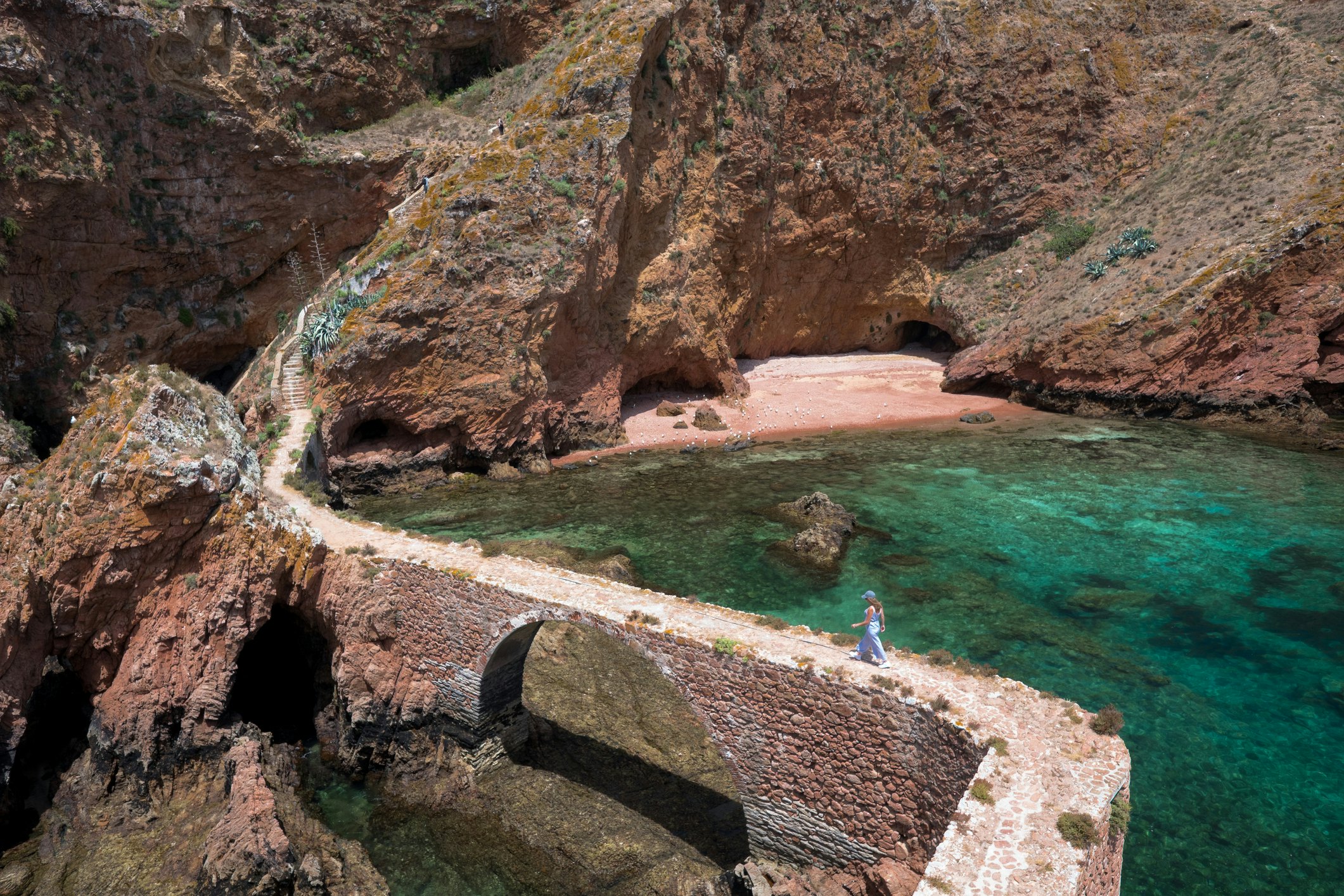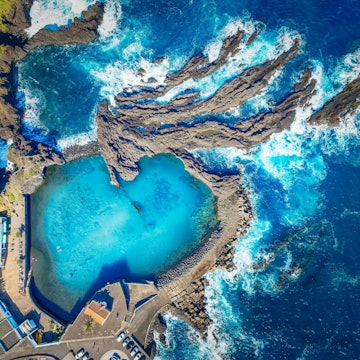

Plan your visit to Berlenga Grande with this guide to the island's top experiences. Alex Astro/Getty Images
Óbidos is most certainly on the list of must-see destinations for those visiting Portugal. But many may not know that only an hour away from the famous medieval town (30 minutes by car and another 30 by boat) is one of the most beautiful nature reserves in the country: Berlengas.
This set of small islands and rocks 10km (6 miles) off the coast of Peniche, consists of Berlenga Grande, Estelas and Farilhões-Forcado, which Unesco recognized as a Biosphere Reserve in 2011. Of the islands that make up the Berlengas archipelago, only Berlenga Grande is visitable. But, far from the thousands of people who walk the streets of Óbidos every day, Berlenga Grande has a daily limit of 550 visitors, and tours only happen between March and October. In 2020, authorities imposed this limit to preserve this exceptional natural habitat and nesting destination for several seabirds, some unique to the Portuguese islands, such as the Cory’s shearwater and the Band-rumped Storm-petrel.
Plan your visit to Berlenga Grande with this guide to the island's top experiences.

Walk the Berlenga trails
The best way to explore Berlenga Grande is by walking the trail along the island. Starting from the pier, the first leg of the path begins near Carreiro dos Cações, the narrowest part of the island, and runs for 1.5km (1 mile) along the east side, also called Ilha Velha. Following the dirt track, you will find several local fishing spots and a view over the other islands: Estelas and Farilhões.
Head back to the viewpoint overlooking the Carreiro dos Cações, where the second part of the trail begins. This busier route leads to Farol da Berlenga and Forte de São João Baptista, the two main buildings in Berlenga Grande.
The climb to the lighthouse is steep, leading to the island's highest point, 92m (300ft) above sea level. Marquês de Pombal commissioned the Farol da Berlenga in 1758. It has been in operation since 1842, but is closed to visitors.
From there, follow the sign that leads to Forte de São João Baptista, a military construction built in the 16th century to defend the Portuguese coast from pirate attacks from Spain and France. It later served as a base for the British during the Napoleonic Invasions. The view from the cliff above the fort is one of the most beautiful on the island, especially on sunny days. Descend to visit the fortress's interior and take a dip from the small pier right next to it.
If you want to avoid going down to the fortress, you can always continue the trail to reach the westernmost part of the island. This path is less traveled and ideal for watching the birds that inhabit the Berlengas. If you visit in late spring and early summer, you will see thousands of black-winged gulls accompanied by their chicks.

Take a boat trip to visit the caves, then hit the beach
One alternative way to explore the Berlenga Grande is by taking a boat ride to visit the different caves that have naturally formed over time.
The visit begins at the pier and follows the island's cutouts, entering caves that amaze with their formations and colors, not to mention the turquoise hue of the water. You will test your imagination by distinguishing in the rocks the body of a whale or a person's face, not to mention the Elephant's Trunk, one of Berlenga's most famous rock formations.
The boat trip also passes by the Forte de São João Baptista, allowing a different view of the fortress, and continues to Cova do Sonho (Dream Cave), so nicknamed because it is one of the fishers' places of choice to spend the night, due to its calmer waters.
Renowned for its marine life, Berlengas is also perfect for snorkeling, diving, kayaking or canoeing.
Set aside an hour during your visit to enjoy the Carreiro do Mosteiro beach. This stretch of sand is small and fills up quickly, but it's ideal for cooling off in some of Portugal's most beautiful and transparent waters.
Accommodation options on Berlenga
Day trips to Berlenga last four hours, but you can choose to spend the night or even a few days.
You can stay at the Forte de São João Baptista. You will sleep in an old cell and must bring all your essentials, including bed linen. The reservation is made directly with the Associação Amigos das Berlengas.
Finally, there is also the possibility of camping. To secure a spot for your tent, contact the Peniche Tourist Office. Remember, space is limited.

It's best to bring food and water with you
Berlenga Island has limited resources, with few places to get supplies. In addition to the restaurant located at Pavilhão Sol e Mar, there is a single cafe called Castelinho, which is situated within a small fortress and serves light meals.
Due to the scarcity of what’s on offer, the prices are quite high, so bring your food and plenty of water to stay hydrated.

How to get there
It only takes a morning or an afternoon to visit Berlenga Grande and get to know this nature reserve. To get there, you must book your round trip by boat from the Port of Peniche with one of the local operators. Confirm the sea forecast before embarking on the trip, as it can become rough once you pass Cabo Carvoeiro towards the island.
It is also essential to get the Berlengas Pass, a mandatory visit permit instituted by the Portuguese government to control the presence on the island. Due to the island's limitations, it is advisable to book your trip and the Berlenga Pass as soon as possible, especially if you plan to visit on the weekend or during the months of July and August.
Driving your a car is the best way to get to Peniche, giving you more freedom with your schedule, but you can also get there by bus with Rodoviária do Oeste from Lisbon's Campo Grande station.
















